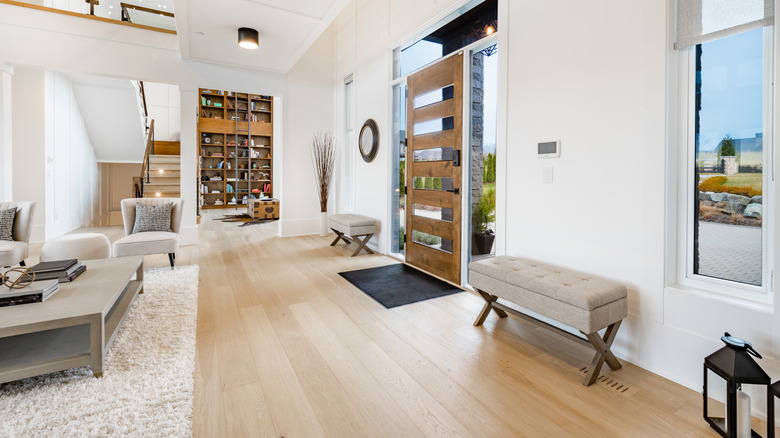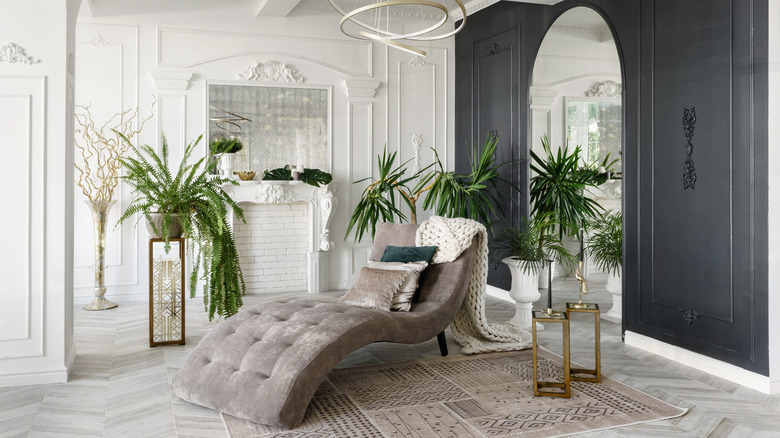What Are Sight Lines And Why Are They Important When Designing A Home?
Designing your dream home is a monumental task. While you might be focused on choosing the home's layout, paint color and type, furniture, and other design elements to ensure your personality and quirks shine through, you might be missing out on one important interior design aspect — sight lines. Think of sight lines as an illusory line stretching between one point of your house to another. It's an uninterrupted line of vision that extends from your eye to the view before you. For instance, these lines control whether you've got a clear line of sight to your garden from the living room or not.
Sight lines determine your view from one place in your house to another. They influence your guests' first impression of your home when you open the doors to welcome them. These lines determine your abode's overall look and feel. While clear views are more appealing and pleasant to the eyes, obstructed views and skewed lines (perhaps due to clutter) impact not only your vision but can also make you anxious.
Importance of sight lines
Sight lines in interior design serve numerous purposes. For starters, they tie up your home's design elements, corridors, and entrances to ensure your rooms seamlessly flow into the next. When done right, this sense of cohesion will make your house look spacious, open, and bright. This is especially true if a window or glass door in your line of sight lets in natural light. Moreover, these imaginary lines impact the way you move around the house.
Further, sight lines help you decide which parts of your home should be immediately visible to you and to your guests, which rooms demand privacy, and which sections shouldn't be easily visible. For instance, you can deliberately use sight lines to highlight your living room from the doorway, tuck away the master bedroom, or hide the kitchen sink at all times. Regardless of traditional or open-concept homes, sight lines let you decide the focal point of your space. But you must exercise caution when wielding sight lines since not all of them are good.
Difference between good and bad sight lines
Though you might be cognizant of sight lines while designing your home, it's necessary to understand how they impact your space. For instance, longer sight lines make your space seem big and open. In comparison, shorter sight lines will make your house seem small and cluttered. Good sight lines make a space look more appealing and involve orienting architecture with furniture flawlessly to create an unimpeded line of vision.
But good sight lines aren't all about clear and unobstructed views. They also allow you to hide your personal space, such as the bedroom and bathroom. Similarly, they help you obstruct your neighbors' field of vision in your bedroom and bathroom with strategically placed furniture, plants, or décor pieces.
However, using these lines without thought can quickly steer them into bad sight-line territory that will infringe on your privacy and impede your line of sight, defeating the purpose of using them. So if you can see the toilet from all the angles in your bedroom or your guests can view the half-bathroom when sitting down for dinner, that's a clear indication of a bad sight line.


